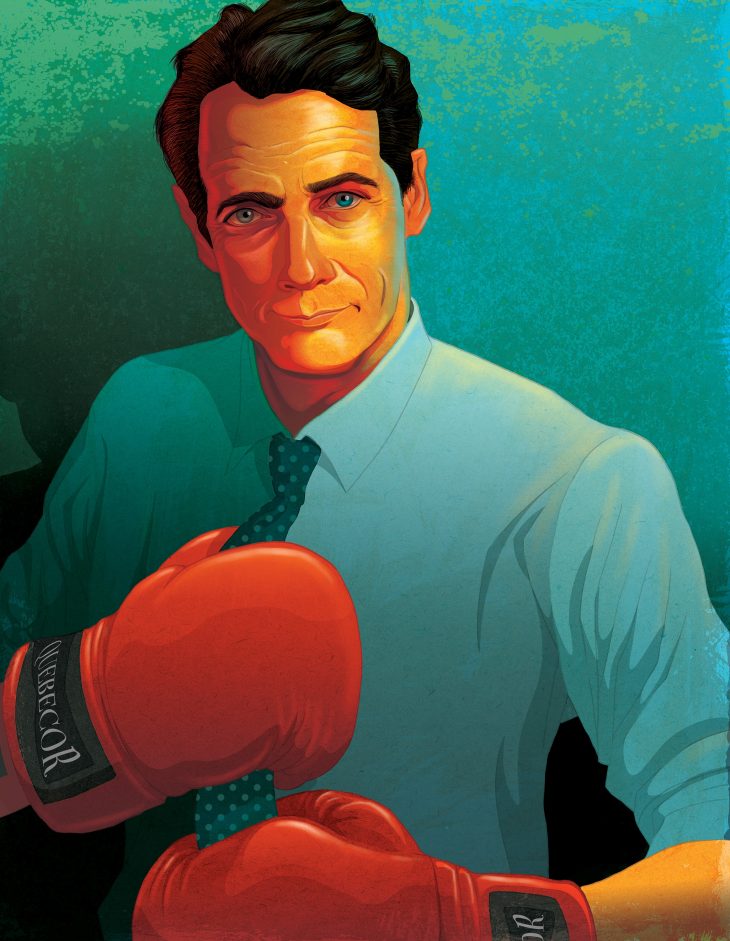
THE CRTC WILL SOON make a decision on Bell’s bid to get its hands on Séries+ and Historia again.
Bell had been forced to sell off the two specialty channels in 2013 when it took over Astral. It’s high time for the CRTC to start promoting innovation instead of shoring up Bell’s dominance.
Does the CRTC realize that its decisions are helping to increase TV ownership concentration and giving Bell enormous bargaining power, enabling it to crush the competition by snapping up the most coveted content in both languages? The CRTC is also allowing channels that were in a monopoly position for years to charge inflated rates that are out of whack with their actual market value. Those high rates drive up cable bills, thereby encouraging cord-cutting and reducing contributions to the Canada Media Fund, undermining our ability to produce television that tells our stories and connects us.
When the CRTC approved Bell’s takeover of Astral (in 2013), many interested parties, including Quebecor, expressed reservations and concerns. Five years later, it is clear that the healthy competition desired by the CRTC and industry players has failed to materialize. The numbers tell the story: Bell now swallows up 51% of the royalties paid by Canadian cable and satellite companies to French-language specialty channels. If Bell is allowed to acquire Séries+ and Historia, that figure will rise to 56%.
How have we reached this point? Aside from the fact that the Bell-Astral deal should never have been allowed to go through, we also have to consider the monopolistic history of many of Bell’s specialty channels. Channels such as RDS, Canal D and Vrak were long shielded by regulation, including “genre protection,” which gave some channels the exclusive right to operate in a specific programming niche, and “access rights,” which forced cable companies to carry the channels in their basic service or in high-penetration plans.
“The CRTC’s actions are endangering the survival of Canada’s broadcasting system and fly in the face of its own objectives.”
While those protections are gone, the CRTC has never succeeded – or even really tried – to eliminate the competitive advantages and particularly the rate advantages those channels still enjoy. One particularly egregious example is the fact that in rate arbitration cases, the CRTC sets royalties on the basis of the historical rates paid to specialty channels by the cable companies. As a result, the fees paid to channels that viewers no longer watch or want – or that are simply overpriced in relation to the market – cannot easily be lowered. So, while the stated goal is to encourage competition, companies are instead being rewarded for having been monopolies in the past.
Take for example the CRTC’s recent arbitration decision on the rate paid by Bell TV to carry TVA Sports. Even though TVA Group’s offer was in line with CRTC precedents, the Commission departed from the principles and interpretations on which it had based its previous decisions in order to unduly favour Bell, to the detriment of Quebecor. This despite the fact that TVA Sports has carved out a strong position in the sports channel market (spending an average of nearly $100 million per year to do so) and now has 1.9 million subscribers and ratings comparable to RDS, which was a monopoly for more than 20 years.
Decisions of this nature, and the CRTC’s failure to fully analyze the competitive environment for Canadian broadcasters, serve to artificially maintain the former monopolies’ advantages when the CRTC should instead be supporting new players that are bringing choice and competition to a television market disrupted by the web, video streaming services and social networks.
The regulator’s willingness to maintain and even increase rates for the former monopolies is causing viewers to flee the Canadian broadcasting system and sign up for services like Netflix, which cost less than a Canadian cable plan. The CRTC’s actions are endangering the survival of Canada’s broadcasting system and fly in the face of its own objectives.
This outdated approach could well wipe out years of effort to provide television viewers with more choice and more diverse points of view. If the CRTC truly wants vigorous competition, as it has long claimed, it must walk the talk.
Pierre Karl Péladeau is president and CEO of Quebecor Inc.



